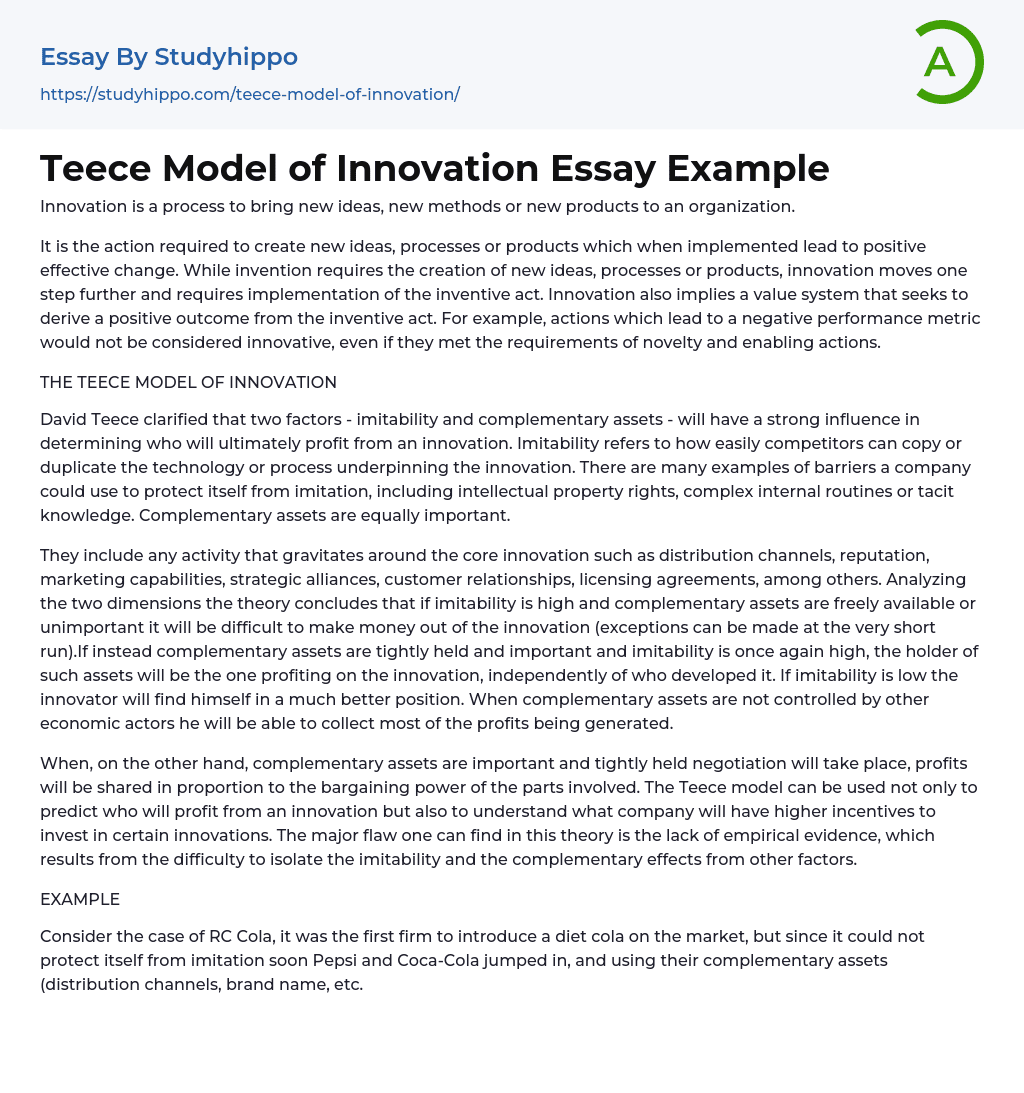Innovation is a process to bring new ideas, new methods or new products to an organization.
It is the action required to create new ideas, processes or products which when implemented lead to positive effective change. While invention requires the creation of new ideas, processes or products, innovation moves one step further and requires implementation of the inventive act. Innovation also implies a value system that seeks to derive a positive outcome from the inventive act. For example, actions which lead to a negative performance metric would not be considered innovative, even if they met the requirements of novelty and enabling actions.
THE TEECE MODEL OF INNOVATION
David Teece clarified that two factors - imitability and complementary assets - will have a strong influence in determining who will ultimately profit from an innovation. Imitability refers to how easily competitors can copy or duplicate the technolog
...y or process underpinning the innovation. There are many examples of barriers a company could use to protect itself from imitation, including intellectual property rights, complex internal routines or tacit knowledge. Complementary assets are equally important.
They include any activity that gravitates around the core innovation such as distribution channels, reputation, marketing capabilities, strategic alliances, customer relationships, licensing agreements, among others. Analyzing the two dimensions the theory concludes that if imitability is high and complementary assets are freely available or unimportant it will be difficult to make money out of the innovation (exceptions can be made at the very short run).If instead complementary assets are tightly held and important and imitability is once again high, the holder of such assets will be the one profiting on the innovation, independently of who developed it. If imitability
is low the innovator will find himself in a much better position. When complementary assets are not controlled by other economic actors he will be able to collect most of the profits being generated.
When, on the other hand, complementary assets are important and tightly held negotiation will take place, profits will be shared in proportion to the bargaining power of the parts involved. The Teece model can be used not only to predict who will profit from an innovation but also to understand what company will have higher incentives to invest in certain innovations. The major flaw one can find in this theory is the lack of empirical evidence, which results from the difficulty to isolate the imitability and the complementary effects from other factors.
EXAMPLE
Consider the case of RC Cola, it was the first firm to introduce a diet cola on the market, but since it could not protect itself from imitation soon Pepsi and Coca-Cola jumped in, and using their complementary assets (distribution channels, brand name, etc.
- Automobile essays
- Bus essays
- Civil engineering essays
- Cycling essays
- Electric Car essays
- Genetic Engineering essays
- Hybrid essays
- Innovation essays
- Internal Combustion Engine essays
- Invention essays
- Mechanical Engineering essays
- Mechanics essays
- Software Engineering essays
- Telephone essays
- Intellectual Property essays




